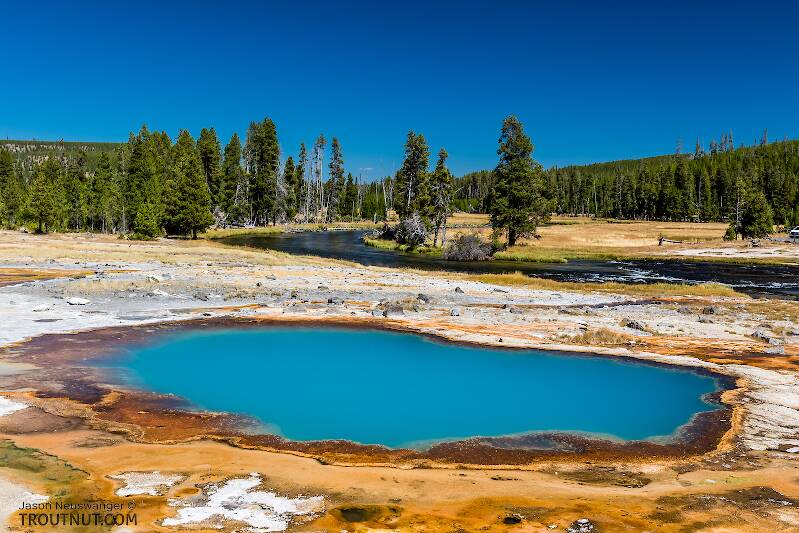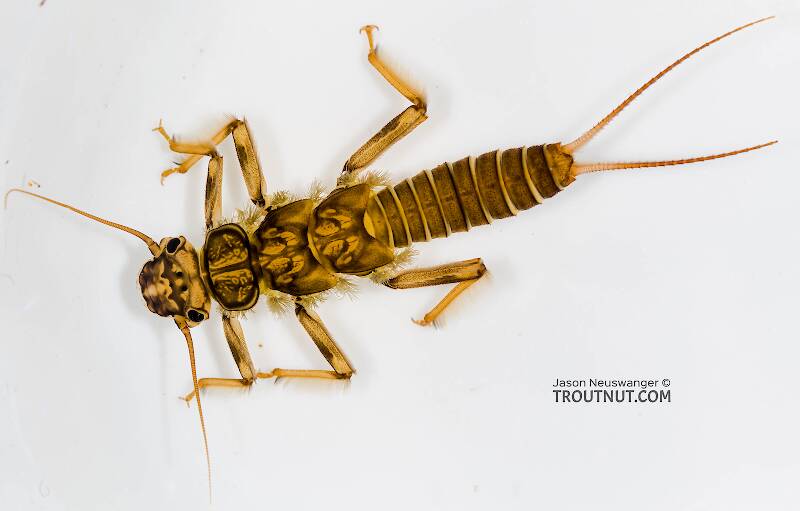
Hex Mayflies
Hexagenia limbata
The famous nocturnal Hex hatch of the Midwest (and a few other lucky locations) stirs to the surface mythically large brown trout that only touch streamers for the rest of the year.

Sweltsa borealis (Boreal Sallfly) Stonefly Nymph Pictures
(Edit: I'm putting a species ID on this one based on the great similarity of its markings to those of an adult I collected in 2023 from a tributary of the same river at around the same time of year.)
This one was tricky to identify. The "thick, depressed dark clothing hairs" on the thoracic sterna inside the coxae, which indicate Sweltsa, are fairly sparse and very difficult to see in my photos, although more apparent under the microscope. However, if I decide those hairs are too sparse to be "thick" and follow the key, I end up pretty clearly at Haploperla. However, Haploperla should have the inner margin of the hind wingpads approximately parallel to the body axis, and they're clearly divergent on this specimen. The pronotal fringe hairs should also be longer than they are in this specimen. So following that whole branch of the key was probably wrong, which leads back to this one being Sweltsa. Unfortunately, nymphs have only been described for a small number of Sweltsa species.
I found just a few of these nymphs alongside a much larger number of bland, typical Sweltsa nymphs.
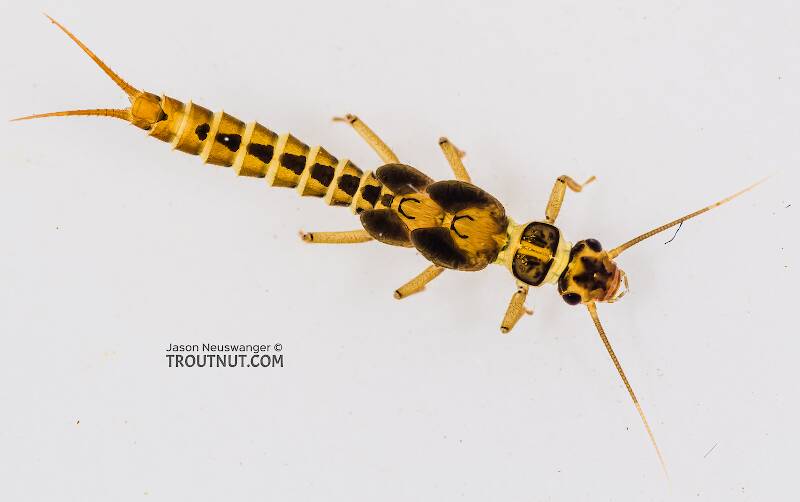
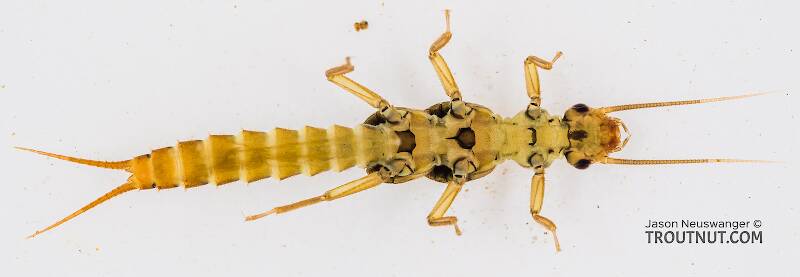
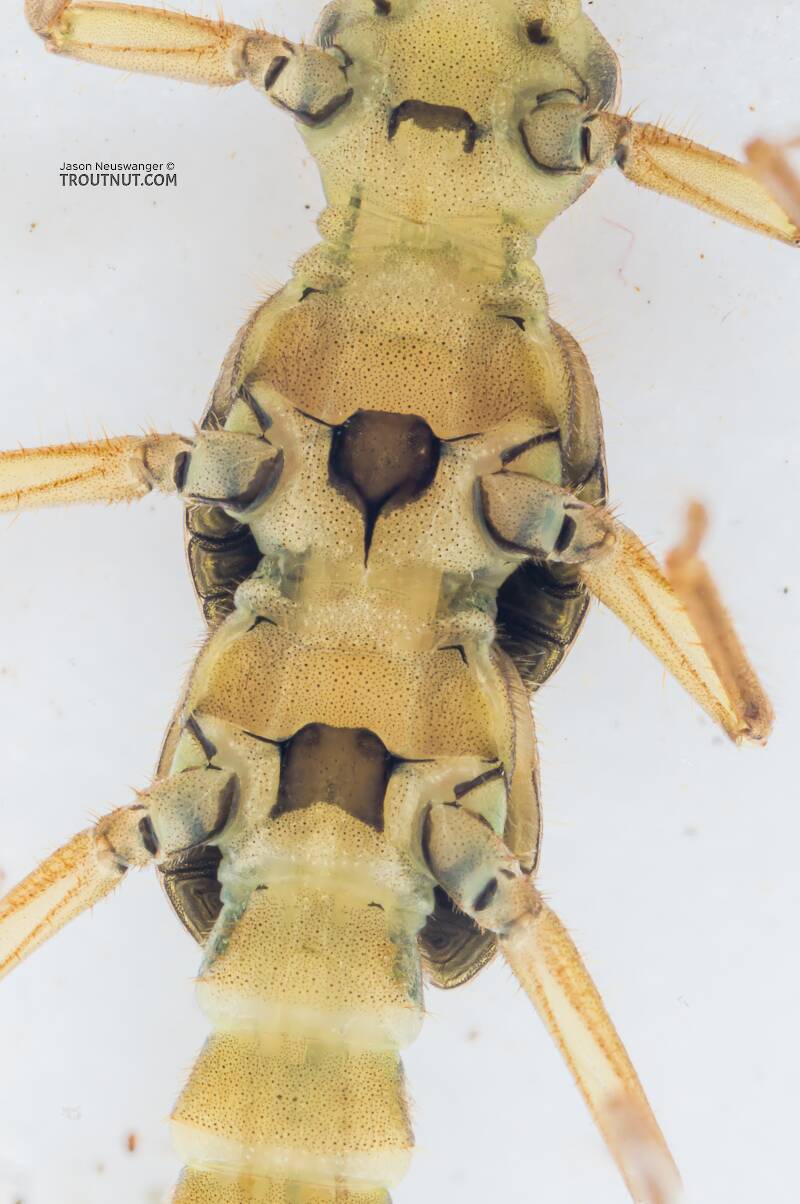
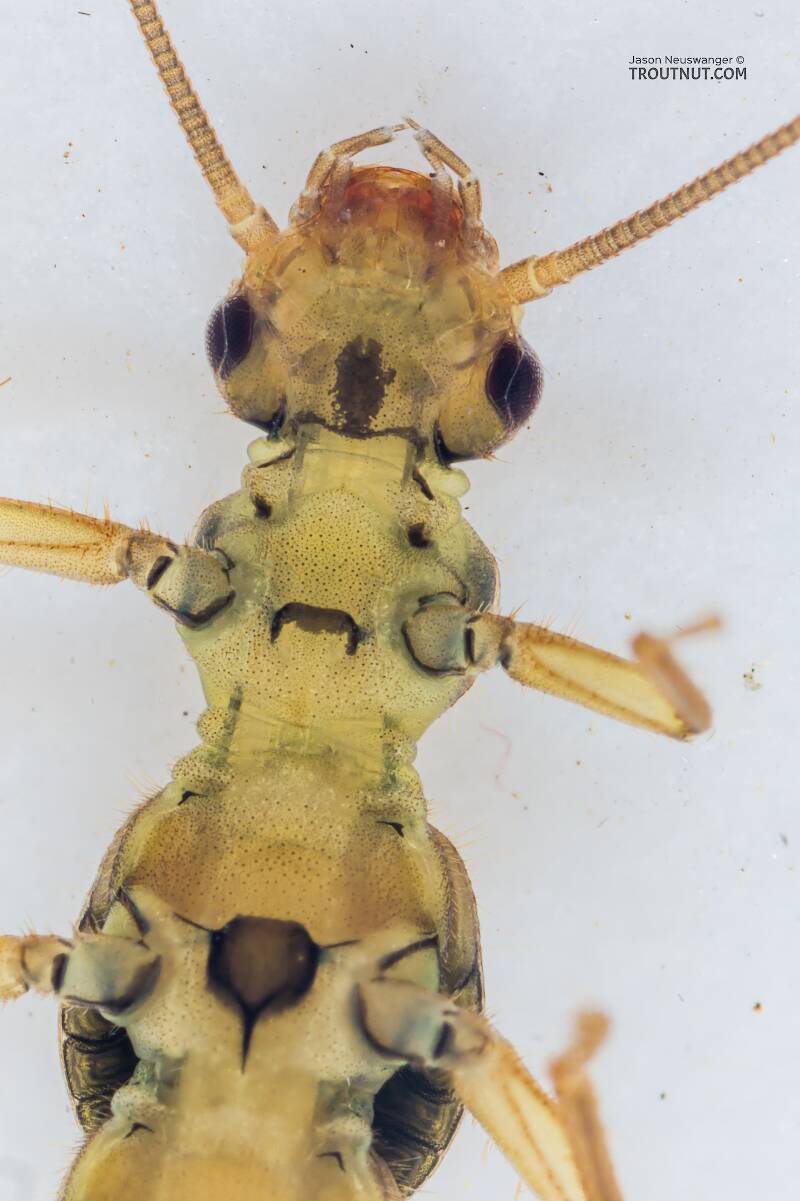
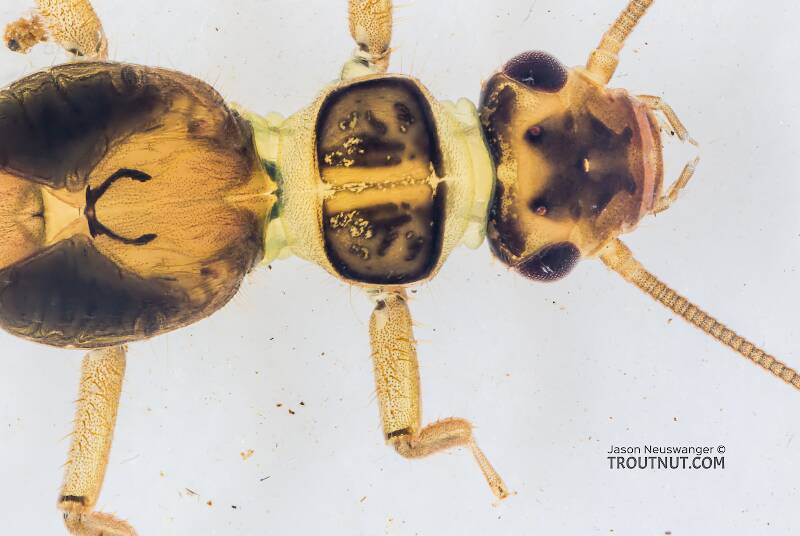
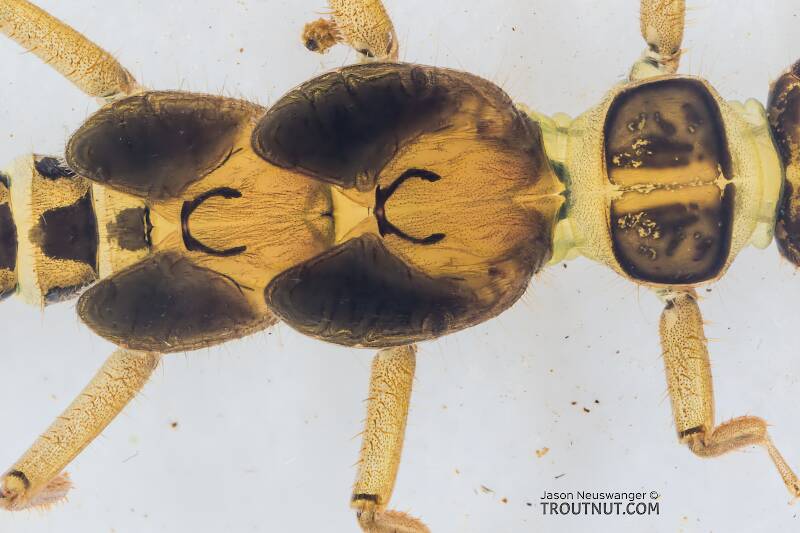
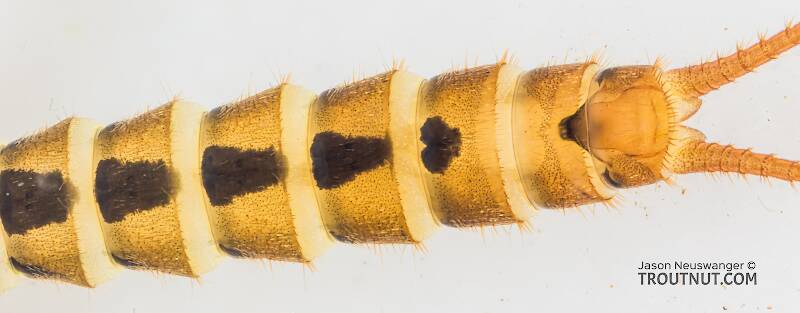
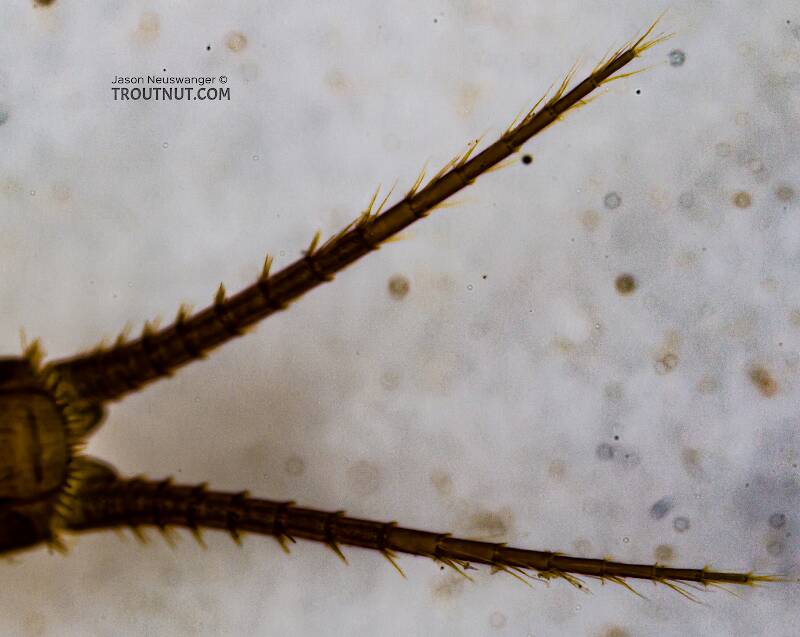
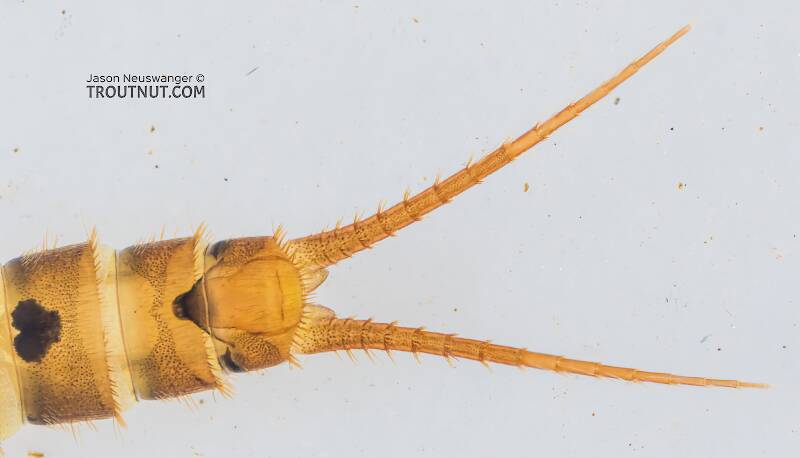
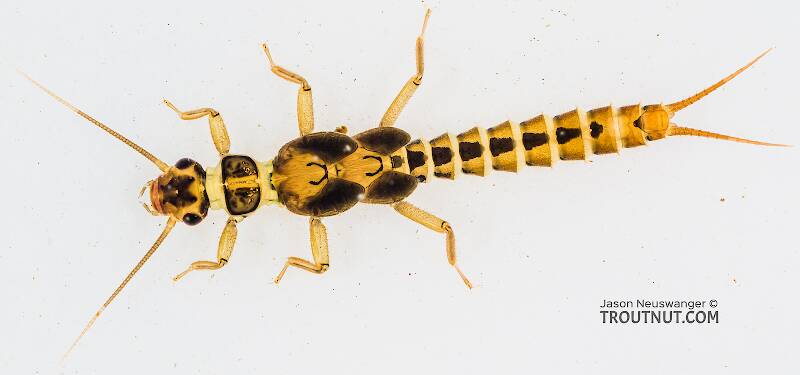
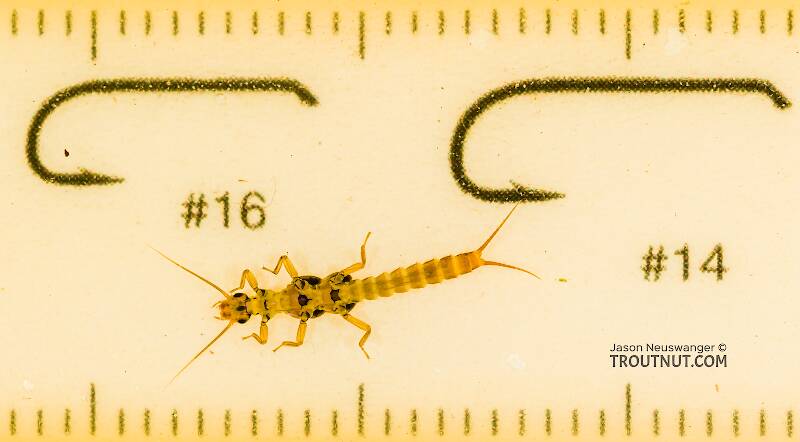
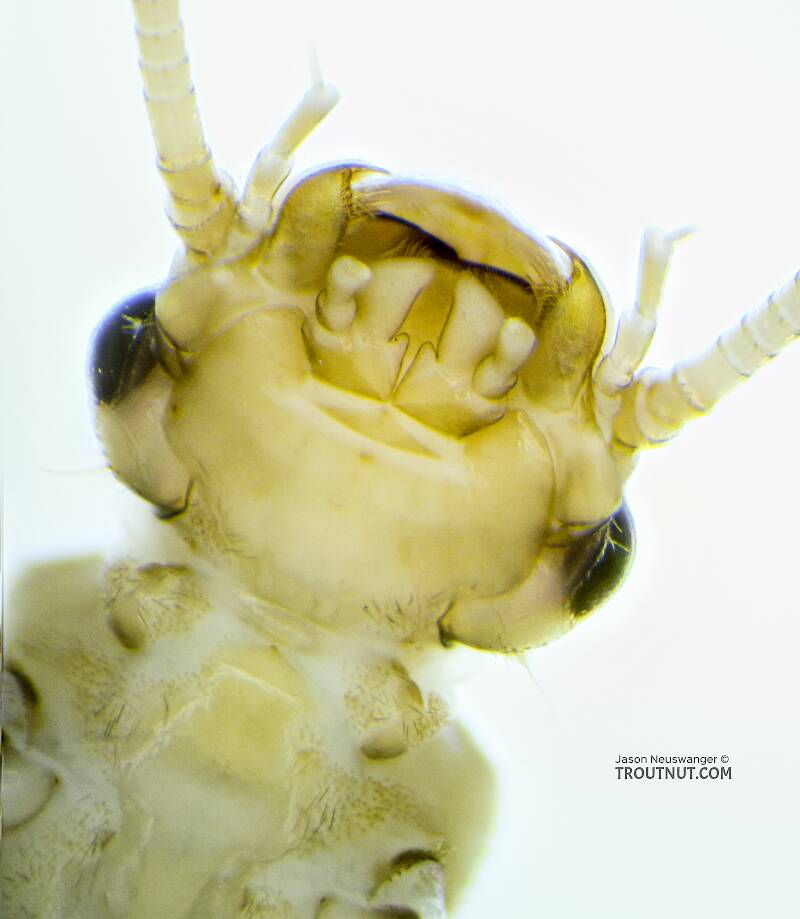
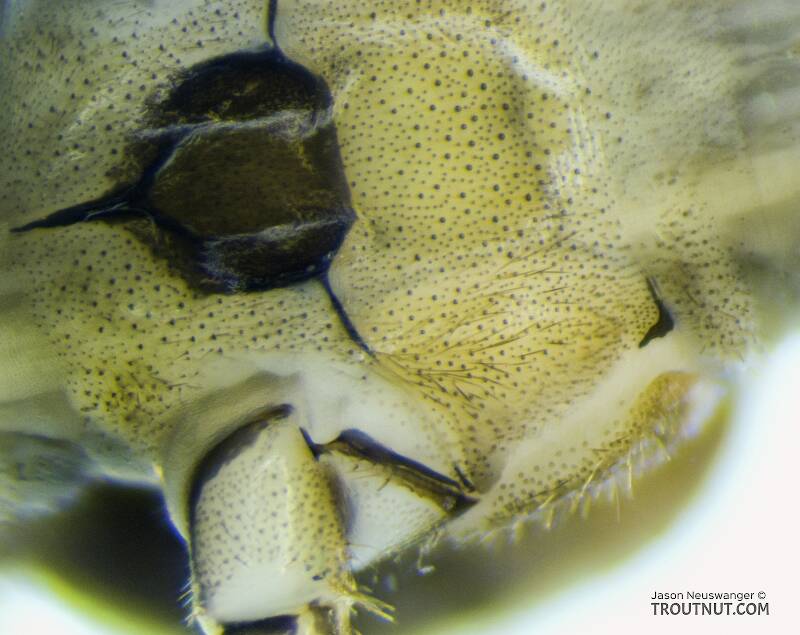
This stonefly was collected from the South Fork Snoqualmie River in Washington on May 14th, 2022 and added to Troutnut.com by Troutnut on May 16th, 2022.
Start a Discussion of Nymph
Sweltsa borealis (Boreal Sallfly) Stonefly Nymph Pictures
Collection details
Date: May 14th, 2022
Added to site: May 16th, 2022
Author: Troutnut

